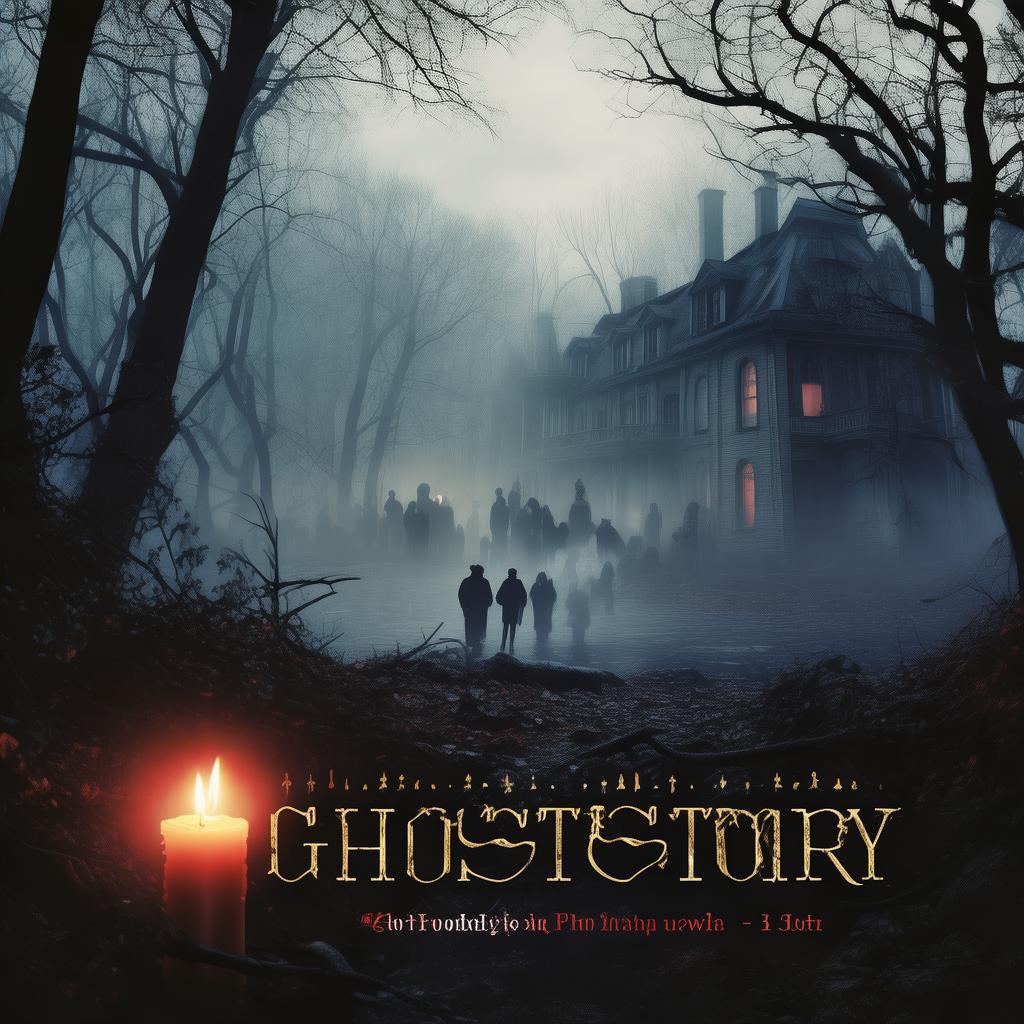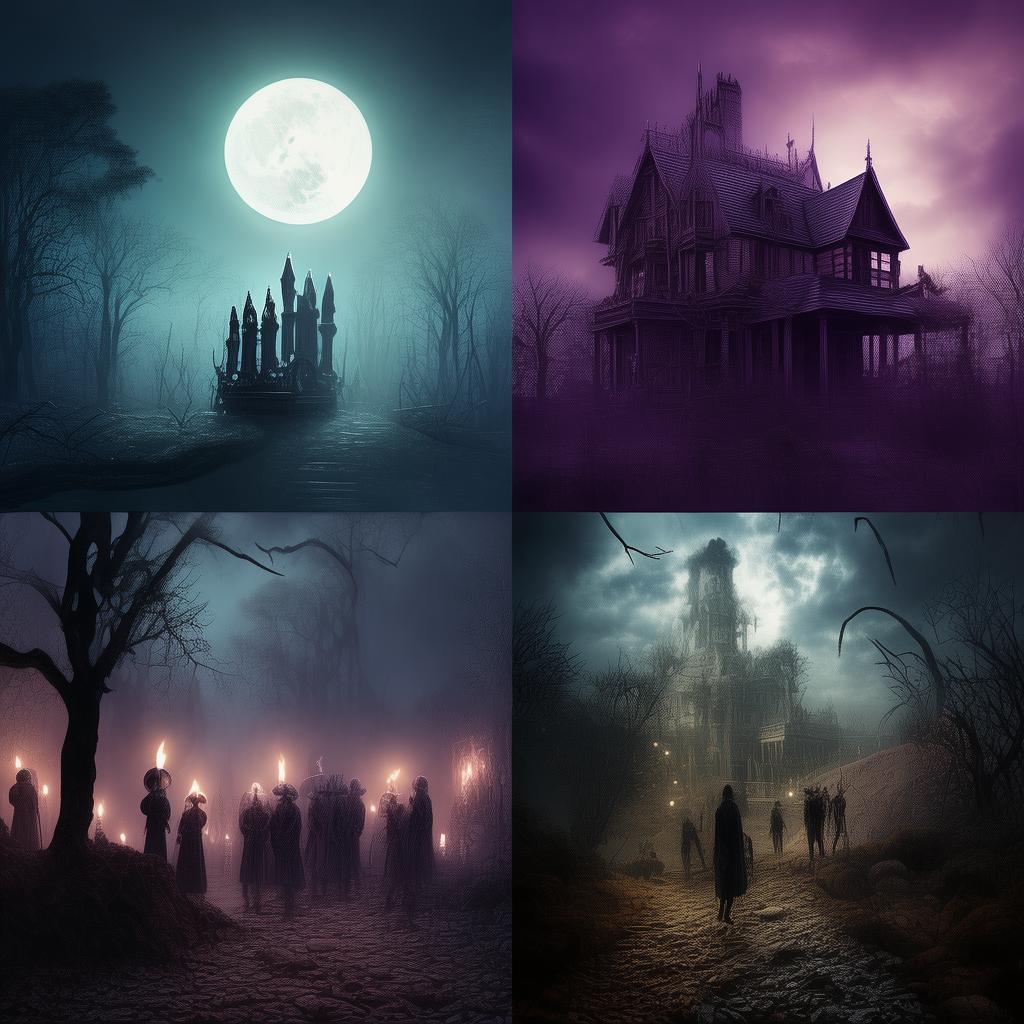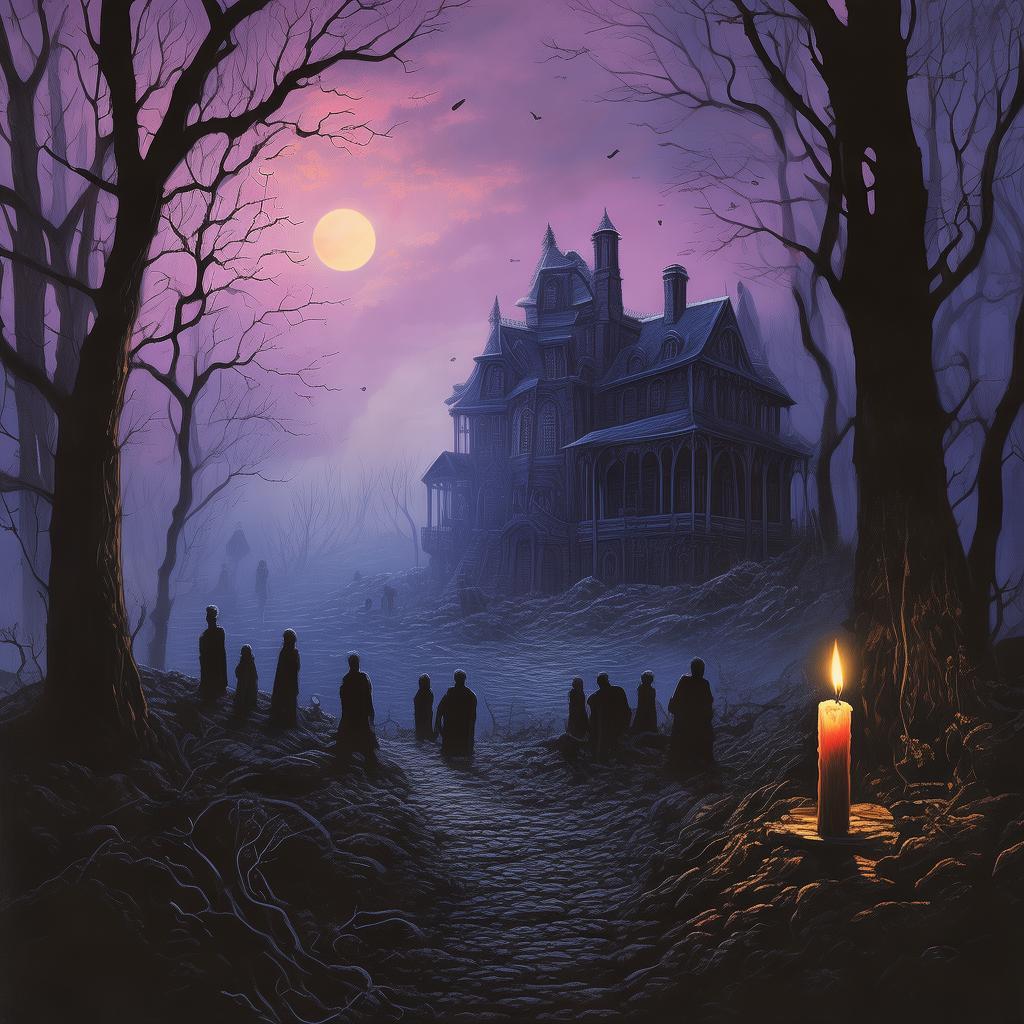The False Demon of the Red Pavilion: A Debunked Fictional Fear
In the heart of the ancient city of Kaifeng, there stood a pavilion known as the Red Pavilion. For centuries, its name had been synonymous with dread and fear. Whispers of the False Demon had become legends, scaring countless locals and visitors. However, a brave and curious soul named Ming sought to uncover the truth behind the Red Pavilion's haunting and bring light to the shadows.
Ming was a historian with a penchant for uncovering the hidden stories of the past. As he delved deeper into the legends of the Red Pavilion, he found himself face-to-face with a web of deceit and fear. The pavilion, once a grand structure, now lay in ruins, overgrown with ivy and surrounded by eerie silence.
According to the stories, the False Demon would appear every full moon, taking the form of a fearsome spirit, and terrorizing those who dared to venture near the pavilion. The locals had become so frightened that they avoided the area at all costs. Ming, however, was determined to dispel this fear once and for all.

His first step was to gather information from the old townspeople. Many had heard the tales but few had actually seen the False Demon. Ming spoke with old farmers, merchants, and even the occasional wanderer who had ventured too close to the pavilion. They all shared the same fear, yet none had a clear account of the demon's appearance or behavior.
Determined not to rely on hearsay, Ming turned his attention to historical texts and artifacts related to the pavilion. He discovered that the pavilion was once a place of religious significance, dedicated to a deity who had long since faded from the public consciousness. The False Demon, he realized, was nothing more than a figment of the locals' imaginations, born from their own fears and superstitions.
As he pieced together the historical context, Ming began to understand the true nature of the pavilion's curse. It seemed that in the 15th century, a great fire had ravaged the pavilion, leaving it in ruins. The townspeople, in their despair, began to believe that the deity of the pavilion had been angered and had sent a False Demon to punish them.
Ming's research led him to a forgotten scroll, which contained a ritual that had been performed to appease the deity and ward off the False Demon. The ritual was complex and involved offerings, prayers, and the lighting of a special lamp. Ming decided to attempt the ritual himself, hoping to prove that the False Demon was indeed a myth.
On the next full moon, Ming gathered the necessary materials and ventured to the pavilion, despite the eerie silence that surrounded it. As he lit the lamp and recited the prayers, a strange phenomenon began to occur. Shadows danced around the pavilion, casting an unsettling ambiance, but no False Demon appeared.
In that moment, Ming realized that the fear had been real, not of the False Demon, but of the unknown. As the shadows dissipated and the moonlight bathed the pavilion, he felt a profound sense of relief. The pavilion, now a symbol of bravery rather than fear, had been restored to its former glory.
Word of Ming's discovery spread like wildfire. The locals came to the pavilion, not out of fear, but out of curiosity. Ming shared his research and the ritual, teaching them that fear was a product of their own making and that knowledge could dispel the darkness.
As the full moon hung low in the sky, the pavilion stood as a testament to Ming's determination. It was a story of debunking fear, a reminder that what we fear often originates within ourselves, and that knowledge is the true light that dispels the shadows of our fears.
Ming's journey through the Red Pavilion was far from over, but he had made a lasting impact on the city of Kaifeng. The pavilion had been freed from the curse of the False Demon, and with it, so too were the minds of its inhabitants.
✨ Original Statement ✨
All articles published on this website (including but not limited to text, images, videos, and other content) are original or authorized for reposting and are protected by relevant laws. Without the explicit written permission of this website, no individual or organization may copy, modify, repost, or use the content for commercial purposes.
If you need to quote or cooperate, please contact this site for authorization. We reserve the right to pursue legal responsibility for any unauthorized use.
Hereby declared.









